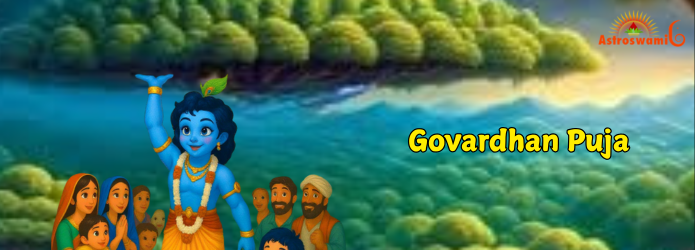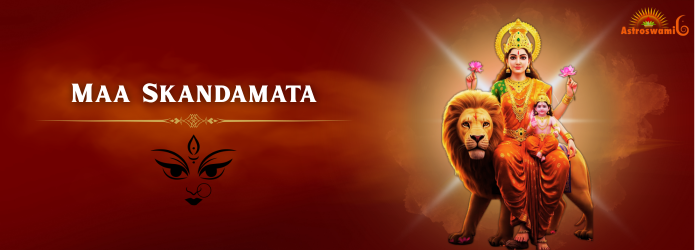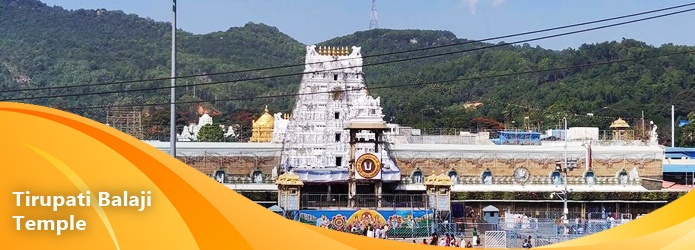
On many occasions, Govardhan Puja, also known as Annakut, is one of the most important festivals celebrated just after Diwali. It is deeply connected to Lord Krishna, who inspired the tradition by lifting the Govardhan hill to protect the people of Vrindavan. In Govardhan 2025, this festival will again be observed with devotion, faith, and enthusiasm across India.Talk to Astrologers for personalized guidance today.
Literally translated from Sanskrit, 'Go' means cow and 'Vardhan' means our nutrition ', and it is not surprising that during the festival of Govardhan Puja, holy cow is worshipped in the Hindu community.
In 2025, Govardhan Puja will be celebrated on Wednesday, 22 October 2025. This day falls on Pratipada Tithi of Kartik month Shukla Paksha, just after Diwali and a day after Lakshmi Puja.
Govardhan Puja Date 2025: Wednesday, 22 October 2025
Pratipada Tithi Begins: 21 October 2025, 05:54 PM
Pratipada Tithi Ends: 22 October 2025, 08:16 PM
Morning Muhurat: 06:26 AM – 08:42 AM
Evening Muhurat: 03:29 PM – 05:44 PM
Many People ask, “Govardhan Puja how to do at home?” The ritual begins by creating a symbolic image of Mount Govardhan using cow dung, decorated with flowers, grains, and miniature figures representing cows and villagers. People prepare a huge variety of food items, also called Annakut, which is offered to Lord Krishna with love and gratitude. After the puja, the food is shared as prasad among family and neighbors. If you are also interested in kundli matching for auspicious occasions, you can consult experts here. Start the new year with राशिफल 2026 or Horoscope 2026
According to Hindu mythology,The Krishna Govardhan Puja is performed to honor the divine miracle of Lord Krishna. According to legends, villagers of Gokul worshipped Lord Indra, also known as the god of rain. However, Lord Krishna asked the people to worship Anandkit Hill or Govardhan Mountains, which they thought was a more powerful God. See predictions for मेष राशिफल 2026 and Aries Horoscope 2026 Govardhan Parbat is often worshipped by devotees who seek nurturing and protection from harsh conditions in life. Parbat is also revered for providing food and shelter to its devotees when they need it. Devotees who want to enhance positive energies during Govardhan Puja can also explore auspicious Gemstones to attract blessings and prosperity. वृषभ राशिफल 2026 and Taurus Horoscope 2026. and how will be the finances
After the advice of Lord Krishna, the people of Gokul started worshipping the Govardhan Hill in place of Lord Indra. On seeing this, Lord Indra became very angry and began to make heavy rain in Gokul. Lord Krishna intervened to save the people by lifting the Govardhan hill with his little finger and covering the people of Gokul under it. This Lord Krishna Govardhan miracle taught the importance of faith in God and respect for nature. New opportunities for Gemini Horoscope 2026 and मिथुन राशिफल 2026 .
Since, Diwali is a five-day festival, and Govardhan Puja is celebrated on the fourth day of Diwali. On this day, devotees spend time praying and seeking blessings for wealth, prosperity, and abundance. Govardhan Puja provides an opportunity for devotees to express their gratitude to the divine.
According to the Bhagavata Purana, Lord Krishna lifted the Govardhan Hill to protect the villagers of Vrindavan from the heavy rains sent by Indra. The hill served as a shelter for all the residents. Because of this, Krishna is also known as Giriraj, the King of Hills. Family Life of कर्क राशिफल 2026 and Cancer Horoscope 2026 The story illustrates how God protects those who surrender and take refuge in Him. The celebration of Govardhan Puja commemorates this miraculous act by Krishna. सिंह राशिफल 2026 (Leo Horoscope 2026) how will be the career. This festival is mainly observed by the Vallabh Community (Pushtimarg), the Gaudiya Sampradaya of Chaitanya, and the Swaminarayan community.
The Annakut story history is tied to Krishna’s teaching of humility and gratitude. "Annakut," meaning "mountain of food," represents abundance and devotion. On this day, temples across India, especially in Mathura and Nathdwara, prepare hundreds of delicacies to offer before the deity as a symbol of unlimited love.कन्या राशिफल 2026 (Virgo Horoscope 2026). health.
One of the most sacred traditions is the Govardhan Parikrama rituals. Thousands of devotees walk around the sacred Govardhan hill, covering about 21 kilometers, while chanting the name of Krishna. It is believed that completing the parikrama brings divine blessings, removes obstacles, and fulfills wishes. Libra Horoscope 2026 and the future of तुला राशिफल 2026 relationship.
Since Annakut the festival is very close to the festival of Diwali, the rituals of both festivals are also closely linked. During the Annakut, like the festival of Diwali, the first three days are on the day of prayer, which is done to purify the money and invite more prosperity in the family. Devotees pray to Lord Krishna and express gratitude to God. वृश्चिक राशिफल 2026 and Scorpio Horoscope 2026 secrets.
Often confused as having the same, Govardhan Puja and Annakut are really different. Govardhan Puja is a major ritual performed during the Annakut; I.e. Govardhan Puja is actually only one section of the Annakut festival throughout the day. धनु राशिफल 2026 and Sagittarius Horoscope 2026 's fate.
In Hindu families, elderly family members of Anukutt consider an auspicious time to teach the religious and cultural values to the children, and sincerely express their dedication to God asking for forgiveness from God.मकर राशिफल 2026 and Capricorn Horoscope 2026 work hard.
As part of the ceremony, people prepare a gala feast, which contains 56 types of food (referenced by local people as Chappan Bhog). It is first offered to Lord Krishna. कुंभ राशिफल 2026 and Aquarius Horoscope 2026 problems
1. What is Govardhan Puja (Annakut)?
Govardhan Puja, also referred to as Annakut ("mountain of food"), is a Hindu festival observed on the day following Diwali. It celebrates Lord Krishna's heavenly act of uplifting the Govardhan Hill to save the inhabitants of Vrindavan from the deluges of rain unleashed by Lord Indra. Devotees create a huge offering of vegetarian cuisine (Annakut) as an expression of gratitude. मीन राशिफल 2026 and Pisces Horoscope 2026 spiritual life
2. When is Govardhan Puja in 2025?
Govardhan Puja in 2025 will be celebrated on:
Thursday, October 23, 2025 (according to the Hindu lunar calendar, on Kartik Shukla Pratipada).
3. How is Govardhan Puja celebrated?
Annakut Preparation: Devotees prepare and offer different types of vegetarian food items (sweets, savories, fruits, etc.) stacked in tiers in the form of a mountain. Puja & Parikrama: Special prayers are held by temples, and devotees are doing Govardhan Parikrama (circumambulation) around a symbolic hill prepared either from cow dung or food.
Cow Worship: Cows are worshiped, as they represent Krishna's affection for Govardhan and his identity as Gopala (cow protector).
4. Why is Govardhan Puja important?
Commemorates nature worship (Govardhan Hill symbolizes nature's abundance).
Highlights humility and devotion over pride (as demonstrated by Krishna's triumph over Indra's pride).Encourages sharing among people through food offerings (Annakut).
5. Is Govardhan Puja identical to Bali Pratipada?
No, though they usually coincide on the same day.
Govardhan Puja is predominantly observed in North India, with emphasis on Krishna's miracle. Bali Pratipada or Padwa commemorates the return of King Bali to Earth and is observed in Maharashtra, Karnataka, and other areas.
Learn the complete aspects of Diwali importance and celebration methods here :- दिवाली 2025 | Diwali 2025 |कब है दिवाली | When is Diwali
Uncover the sacred traditions and vrat vidhi of Karwa Chauth here :- Karwa Chauth 2025 | करवा चौथ 2025
Find the complete story and pooja rituals of the Dhanteras festival here – Dhanteras 2025 | Dhanteras in Hindi
Read in detail about the traditions and importance of Govardhan Puja here :- significance of govardhan puja |गोवर्धन पूजा 2025
Learn more about Ahoi Ashtami fasting and its sacred traditions here :- Ahoi Ashtami 2025 | Ahoi Ashtami in Hindi
Find complete details about the divine Ram–Sita Vivah celebration here :- Ram Vivah Panchami | Vivah Panchami 2025
Read in detail about the traditions and importance of Chhath Puja here - Chhath Puja| Chhath Puja 2025

When we talk about Zodiac signs, zodiacs to have their evil counterparts known as Black Zodiac....

Lohri 2026 date, rituals and significance explained! Discover the auspicious timing and spiritual meaning behind this joyful harvest festival....

Maa Skandamata - Navratri Day 5: Explore the significance, mantra, and detailed puja vidhi of Maa Skandamata on Navratri’s fifth day. Embrace her divi...

Tirupati Balaji Temple is one of the richest temples located in Andhra Pradesh....